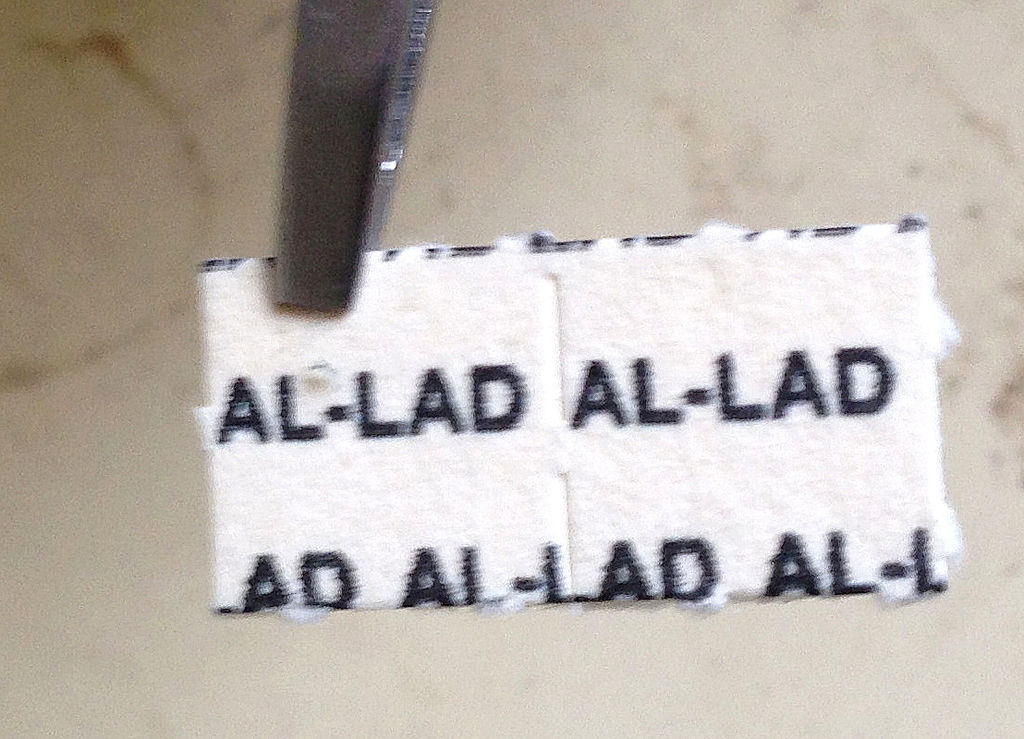AL-LAD: Difference between revisions
| (16 intermediate revisions by 5 users not shown) | |||
| Line 1: | Line 1: | ||
[[File:allad.jpg|left|200px]] | |||
'''AL-LAD''' is a hallucinogenic drug, lysergamide and an analogue of [[LSD]]. It is described by Alexander Shulgin in the book ''TiHKAL'' (Tryptamines i Have Known And Loved). AL-LAD is reported as having some subtle experiential differences to LSD (such as increased visuals), and also appears to be slightly shorter lasting. AL-LAD doses are similar to those of LSD, depending on purity. | |||
= | == History == | ||
AL-LAD was originally discovered in the 90s by David Nichols along with several LSD analogues, and later reviewed by Alexander Shulgin. The drug was popularised for recreational use in 2013, as part of the progression through the release of chemicals Shulgin discusses and provides syntheses for in his book TiHKAL. It became increasingly popular among recreational users, via the conduit of its legality and easy access through the Internet. Since then, a few countries such as the UK have moved to illegalise the chemical. | |||
== Dosage == | |||
= | {| class="wikitable" | ||
|+ Oral | |||
| Common || 60-160μg | |||
|- | |||
| Strong || 300μg+ | |||
|} | |||
== Duration == | |||
{| class="wikitable" | |||
|+ Oral | |||
| Onset|| 45-90 minutes | |||
|- | |||
| Duration|| 4-6 hours | |||
|} | |||
= Effects = | == Effects == | ||
In large, AL-LAD is reported as having a very similar effect profile to [[LSD]]. However, many subjective differences are noted - a different 'headspace' and slightly different visuals are noted, along with what may be perceived as a slightly 'happier' push. | |||
= | == Harm Reduction == | ||
While widespread use of AL-LAD is relatively new and therefore its full impact is unknown, it is likely that it has a similar safety profile to [[LSD]]. Refer to [[LSD]] and [[Psychedelics#Harm_Reduction|Psychedelic Harm Reduction]] for more information. | |||
= | == Chemistry and Pharmacology == | ||
Systemaic name:6-allyl-6-nor-lysergic acid diethylamide | |||
=== Reactivity === | |||
AL-LAD does not cause a colour change with the marquis, mecke or mandelin reagents but does cause the ehrlich's reagent to turn purple because of the presence of the indole moiety in its structure. | |||
== Legal status == | |||
=== America === | |||
Controlled in the United States via the Federal Analog Act, but only if it is intended for human consumption. | |||
== | === United Kingdom === | ||
AL-LAD was scheduled as a Class A drug in the UK in June 2014, despite not carrying out any of the usual recommended research on proving any harm is associated with recreational use of the drug. | |||
== Links == | |||
* [https://www.erowid.org/library/books_online/tihkal/tihkal01.shtml The TiHKAL entry for AL-LAD] | |||
* [https://en.wikipedia.org/wiki/AL-LAD Wikipedia] | |||
* [http://tripsit.me/the-story-of-al-lad The Story of AL-LAD] | |||
[[Category:Drugs]] | [[Category:Drugs]] | ||
[[Category:Psychedelic]] | [[Category:Psychedelic]] | ||
[[Category:Research Chemical]] | |||
Latest revision as of 06:04, 21 February 2016

AL-LAD is a hallucinogenic drug, lysergamide and an analogue of LSD. It is described by Alexander Shulgin in the book TiHKAL (Tryptamines i Have Known And Loved). AL-LAD is reported as having some subtle experiential differences to LSD (such as increased visuals), and also appears to be slightly shorter lasting. AL-LAD doses are similar to those of LSD, depending on purity.
History
AL-LAD was originally discovered in the 90s by David Nichols along with several LSD analogues, and later reviewed by Alexander Shulgin. The drug was popularised for recreational use in 2013, as part of the progression through the release of chemicals Shulgin discusses and provides syntheses for in his book TiHKAL. It became increasingly popular among recreational users, via the conduit of its legality and easy access through the Internet. Since then, a few countries such as the UK have moved to illegalise the chemical.
Dosage
| Common | 60-160μg |
| Strong | 300μg+ |
Duration
| Onset | 45-90 minutes |
| Duration | 4-6 hours |
Effects
In large, AL-LAD is reported as having a very similar effect profile to LSD. However, many subjective differences are noted - a different 'headspace' and slightly different visuals are noted, along with what may be perceived as a slightly 'happier' push.
Harm Reduction
While widespread use of AL-LAD is relatively new and therefore its full impact is unknown, it is likely that it has a similar safety profile to LSD. Refer to LSD and Psychedelic Harm Reduction for more information.
Chemistry and Pharmacology
Systemaic name:6-allyl-6-nor-lysergic acid diethylamide
Reactivity
AL-LAD does not cause a colour change with the marquis, mecke or mandelin reagents but does cause the ehrlich's reagent to turn purple because of the presence of the indole moiety in its structure.
Legal status
America
Controlled in the United States via the Federal Analog Act, but only if it is intended for human consumption.
United Kingdom
AL-LAD was scheduled as a Class A drug in the UK in June 2014, despite not carrying out any of the usual recommended research on proving any harm is associated with recreational use of the drug.